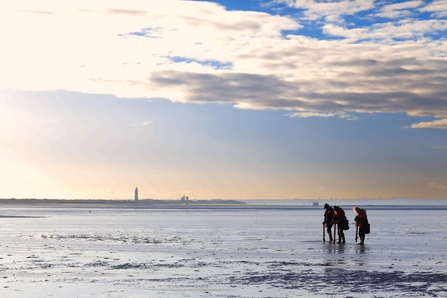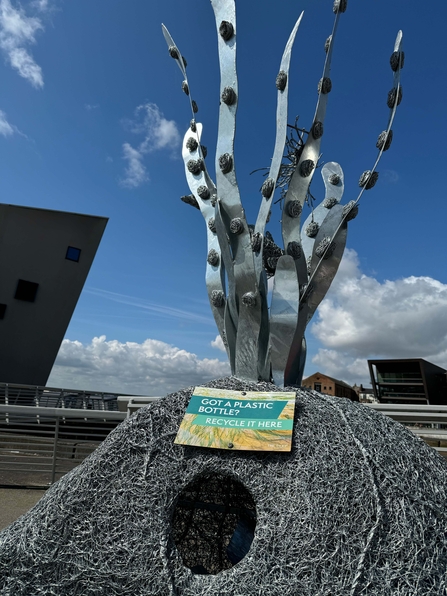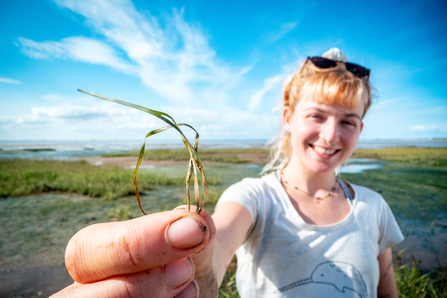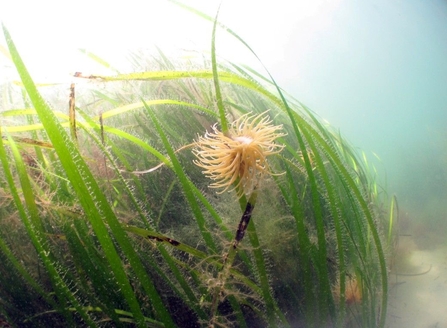A pioneering partnership between Yorkshire & Lincolnshire Wildlife Trusts and Ørsted, Wilder Humber has an ambitious 5-year plan: to return 40 hectares of lost biodiversity to the Humber estuary through sand dune, saltmarsh, seagrass, and native oyster restoration.
Wilder Humber unveils new seagrass sculpture at The Deep

Seagrass planting at Spurn Point (c) Cate Holborn
Yorkshire Wildlife Trust is delighted to support the installation of the seagrass sculpture and recycling bin at The Deep, as part of our Wilder Humber restoration project. Through the new sculpture, we hope to highlight the importance of healthy seagrass for our marine ecosystems and raise awareness of seagrass in the Humber estuary both as a valuable habitat for marine species and as an incredible ally in the fight against climate change.Deputy Chief Executive at Yorkshire Wildlife Trust
The Deep supports Wilder Humber through exhibition, education and interpretation of this important conservation action.
This beautiful sculpture, which represents a native seagrass species, Zostera noltii, and doubles up as a plastic bottle recycling station, is situated on the grounds of The Deep where passers-by can learn more about seagrass and local conservation action, as well as making use of the recycling station for their plastic bottles.

Seagrass sculpture (c) Cora Hairsine
The Humber estuary once supported vast seagrass meadows across both banks, with records of seagrass covering over 500 hectares at Spurn Point, and vast swathes from Grimsby to Cleethorpes. Due to industrialisation of the estuary, and subsequent decline in water quality, disease and coastal squeeze, the expansive seagrass beds deteriorated almost completely, between the 1930s and 1980s.
Seagrass is the world’s only flowering plant capable of living in seawater and, globally, captures carbon up to 35 times faster than tropical rainforests, accounting for 10-18% of total ocean carbon storage despite covering less than 0.1% of the seafloor. Seagrass can also help protect our coast from damaging storms and erosion through dampening the force of waves and is very effective at removing pollutants from our waters.

Seagrass Seed Collecting (c) Finn Varney
Creating the seagrass sculpture for The Deep was a wonderful opportunity to raise awareness and celebrate how important our seagrass meadows are. The sculpture represents the little bags of seeds that are planted in the Humber estuary, which over time grow to create swathes of seagrass meadows that capture carbon and restore vital feeding grounds. We too can help the environment by recycling our plastic bottles and at the same time learn a little bit more about this amazing plant.Seagrass Sculpture Artist
In the UK, seagrass meadows are a vital habitat for marine life. They support biodiversity by providing essential nursery habitat for important fish species, such as bass and sand eel, and bird species such as Brent geese.

(C) Andrew Pearson
Up to 12 million tonnes of plastic waste enters the oceans each year, which has a significant impact on our marine ecosystems. Together, we can work to change this shocking statistic and protect the environment by choosing to recycle.Director of Husbandry & Exhibition
Wilder Humber is celebrating National Marine Week, which runs from 27th July to 11th August, with a craft and exploration event at Spurn Discovery Centre on Monday 29th July.
Come along from 11am to 2pm to discover more about this incredible project and get creative with some fun crafts!

